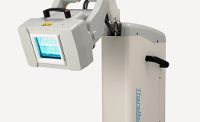VOLUME 93, ISSUE 2, P109-115, FEBRUARY 01, 2019
Dual wavelength 5-aminolevulinic acid photodynamic therapy using a novel flexible light-emitting diode unit
Hideyuki Masuda1,2, Makoto Kimura1,2, Akiko Nishioka1, Hiroshi Kato1, Akimichi Morita1
1 Department of Geriatric and Environmental Dermatology, Nagoya City University, Graduate School of Medical Sciences, Nagoya, Japan
2 USHIO INC, Tokyo, Japan
皮膚疾患における光線力学療法(PDT)では、主に光増感剤として5-アミノレブリン酸(ALA)やアミノレブリン酸メチル(MAL)が用いられる。それらは細胞内でプロトポルフィリンIX(PpIX)に代謝され、410 nm、510 nm、545 nm、580 nm、630 nmの5つの吸収波長ピークをもつ。PDTの光源は635nm付近の赤色光と400nm付近の青色光のみが用いられてきたが、PpIXの他の吸収ピークに対応する波長を含む複数の波長を用いることで、PDTの効率を向上させることができる可能性がある。さらに、対象疾患は顔面に生じることが多いため、目、鼻孔、口などの粘膜を不必要に露出させることなく病変部に装着できるフレキシブルタイプの光源ユニットが好ましい。そこで我々は、複数の波長を照射するフレキシブルなLEDユニットによるPDT効果の向上について、HaCaT細胞および皮膚がんモデルマウスを用いて検討した。
In photodynamic therapy (PDT) for skin diseases, 5-aminolevulinic acid (ALA) and Methyl-5-aminolevulinate (MAL) are mainly used as photosensitizers. They are metabolized intracellularly to protoporphyrin IX (PpIX), which has five absorption wavelength peaks at 410 nm, 510 nm, 545 nm, 580 nm and 630 nm. Only red light near 635 nm and blue light near 400 nm have been used as light sources for PDT. However, multiple wavelengths, including wavelengths corresponding to other absorption peaks of PpIX, may improve the efficiency of PDT. Furthermore, since the target disease often occurs on the face, a flexible type light source unit that can be attached to the lesion without unnecessarily exposing mucous membranes such as eyes, nostrils, and mouth is desirable. Therefore, we investigated the enhancement of PDT efficacy by a flexible LED unit having multiple wavelengths using HaCaT cells and a mouse model of skin cancer.
論文はコチラ(外部サイトへジャンプします)
Copyright © USHIO INC. All Rights Reserved

